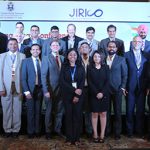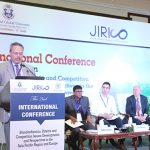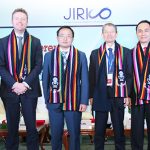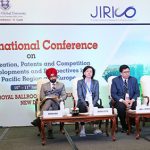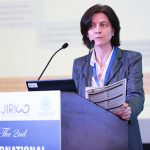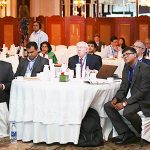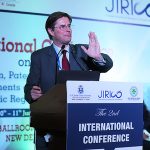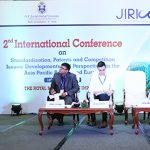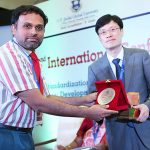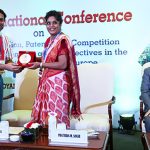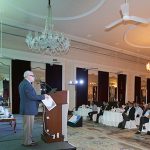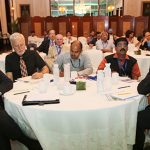Invitation_Conference_for 10th June_9th_June_FNL_NEWJune 10th-11th, 2017
Standard Essential Patents (SEPs) are fairly common in the telecommunication sector. Standards declared by Standard Setting Organizations (SSOs) allow innovators to negotiate licenses with implementers on fair, reasonable, and non-discriminatory (FRAND) terms and conditions. In most instances, innovators and implementers successfully negotiate licensing of SEPs. However, there have been instances wherein disagreements on royalty base and royalty rates, terms of licensing, bundling of patents in licenses, pooling of licenses have emerged. This has resulted in a surge of litigation in various jurisdictions and also drawn the attention of competition/ anti-trust regulators. Further, a lingering lack of consensus among scholars, industry experts and regulators regarding solutions and techniques that are apposite in these matters across jurisdictions has added to the confusion.
JIRICO’s 2nd conference seeks to explore the following critical themes, with a special emphasis to developments in the Asia-Pacific Region and Europe.
a.) SSOs’ Patent Policies and Due Process Principles
As SSOs play a major role in developing and declaring standards it is necessary to examine the role essayed by them in evolving policies that seek to serve the public interest in a variety of ways by facilitating interoperability among complementary products It is necessary to examine the role of procedural changes by SSOs and the level of transparency maintained by SSOs in changing IPR policies. This theme will focus on the changing dynamics of collaboration among innovators within the context of anticompetitive effects on standard development.
b.) Reasonable Royalty Determination: Principles and Best Practices
Determination of the royalty base has become a key issue in SEP related issues. Should the courts determine the proper royalty base? Should this be based on the entire market value rule (EMVR) or on the basis of the smallest saleable patent practicing unit (SSPPU)? Some have argued that it should be based on EMVR as it is based on real world negotiation between parties, who often take into account the price of the downstream product. However, courts and competition regulators in certain jurisdictions have in recent times opted for SSPPU as the royalty base. Determining what amounts to fair and reasonable rate of royalty is a difficult proposition. Aggrieved parties seek the aid of courts to determine these issues. Courts and competition regulators may have to rely on the markets to determine whether royalty demanded by the innovator amounts to anti-competitive behaviour. This theme will answer the following questions: What are the flaws in each of the two methods? How is fairness determined in royalty determination? What is the importance of timing of hypothetical bargain, use of comparable licenses and reliance on Non-Disclosure Agreements (NDAs) in these matters?
c.) Patent bundling leading to anti-competitive practices.
Tying and bundling of licenses is justified by the industry on the basis of efficiency. Courts and competition regulators in various jurisdictions have viewed this practice with scepticism, and on certain occasions termed such practices as illegal. Implementers have similarly raised concerns about such practices. Therefore, it is necessary to examine such practices and evolve strategies that can clearly distinguish practices that are pro and anti-competitive practices. To get a better understanding of these issues, and developments in Asia-Pacific region and in Europe, this theme seeks to bring together economists, regulators and practitioners to advance our understanding of the relationships between portfolio licensing, bundling of essential patents and antitrust implications.
d.) Transparency and Procedural Fairness in Antitrust Enforcement
How substantive competition rules are enforced plays a crucial role in achieving their goals. There has been a push for increased transparency and due process from both industry participants as well as competition regulators themselves. But, in matters of FRAND encumbered SEPs, should competition regulators be like lifeguards that act when there is a possibility of an adverse outcome (to competition), or like tollbooth attendants that monitor (competitors) at every stage? This question becomes even more important in the light of emerging trends in Asian jurisdictions vis-à-vis best practices in due process and antitrust enforcement established in some other jurisdictions. This theme of the conference will focus on the interrelated aspects of extraterritoriality of competition/antitrust laws, challenges to international comity, representation of and notification to parties, and ensuring that processes in antitrust investigation adhere to principles of procedural fairness that contribute to legitimacy of antitrust enforcement. This theme will lay special emphasis on India where it has been 15 years since the Competition Act, 2002 came out. This session will also seek to address questions of how the Indian competition law has evolved since 2002. Has it managed to keep up with the pace of technology development in ICT and other technologies?
Second International Conference on “Standardization, Patents and Competition Issues” (Download)



